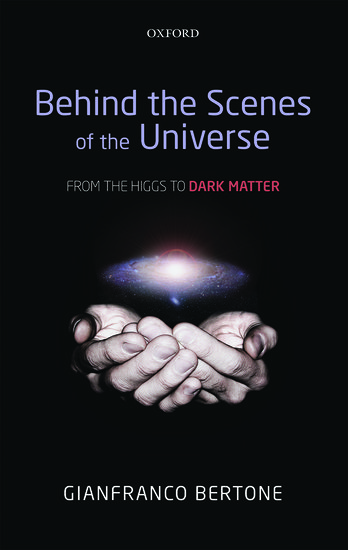By Gianfranco Bertone
A quiet turmoil agitates the international scientific community, as cosmology and particle physics discretely inch toward a pivotal paradigm shift.

When new beams of particles start to circulate again in the 27-kilometerlong tunnel, it will be at almost twice the energy reached in the previous run: an energy that may allow the creation and discovery of new particles, including hopefully the mysterious ones that seem to permeate, shape, and support the entire Universe: dark matter particles.
Meanwhile, scientific organizations worldwide are sponsoring the construction of numerous large underground detectors to sift dark matter particles from other forms of cosmic radiation. A wide array of other Astroparticle experiments (the AMS-02 detector aboard the international space station, NASA’s Fermi satellite, the Icecube neutrino telescope at the South Pole) seek to detect the pale light produced by dark matter particles as they collide with each other in cosmic structures.
Why so much interest in dark matter? The roots of this mystery run deep in time, but only very recently has the dark matter problem manifested itself in all its inexorable, fierce difficulty, shaking the foundations of cosmology and particle physics. The understanding of the universe had proceeded rather linearly from the beginning of the 20th century, when Hubble had discovered the expansion of the universe. But when, in the 1970s, scientists tried to put together the many pieces of the cosmic puzzle and to come up with a consistent cosmological model, these pieces just didn’t seem to fit.
To complete that puzzle, the existence of a new form of matter, dark matter, had to be postulated. Suddenly galaxies like our own Milky Way became uncomfortably big, embarrassingly massive, and overall quite bizarre. Nobody knew what galaxies, or at that point anything else in the universe, were actually made of anymore.
Physicists are fortunately imaginative people, and over the last three decades, they have devised dozens of explanations for the dark matter problem, mostly in the form of new particles. Among these dark matter candidates, weakly interacting massive particles are by far the most studied, for they emerge ‘naturally’ from theories that seek to extend the already rich and heterogeneous zoo of known particles and fields.
It is the connection between dark matter and the possible existence of new physics at the weak scale that is about to be put to test with the LHC and the new generation of astroparticle experiments, for these particles are expected to leave a trace in one or more of those detectors.
There are two possibilities. If no new particles are found within the next five years, this paradigm will inevitably be abandoned, and the community will be forced to go back to the drawing board and formulate new hypotheses. If instead, new particles are found, that discovery would pave the way of a new golden age in cosmology and particle physics.
Either way, we are about to get an answer. And in an era where scientific experiments require the coordinated effort of hundreds or thousands of people over several decades, that is a comforting thought.
Gianfranco Bertone is an Associate Professor at the University of Amsterdam, where he investigates topics at the interface between Particle Physics and Cosmology. He is the author of Behind the Scenes of the Universe: From the Higgs to Dark Matter, editor of the book Particle Dark Matter: Observations, Models and Searches, and editor-in-chief of the journal Physics of the Dark Universe.
Subscribe to the OUPblog via email or RSS.
Subscribe to only physics and chemistry articles on the OUPblog via email or RSS.


[…] the text of a blog post I recently wrote for the Oxford University Press […]